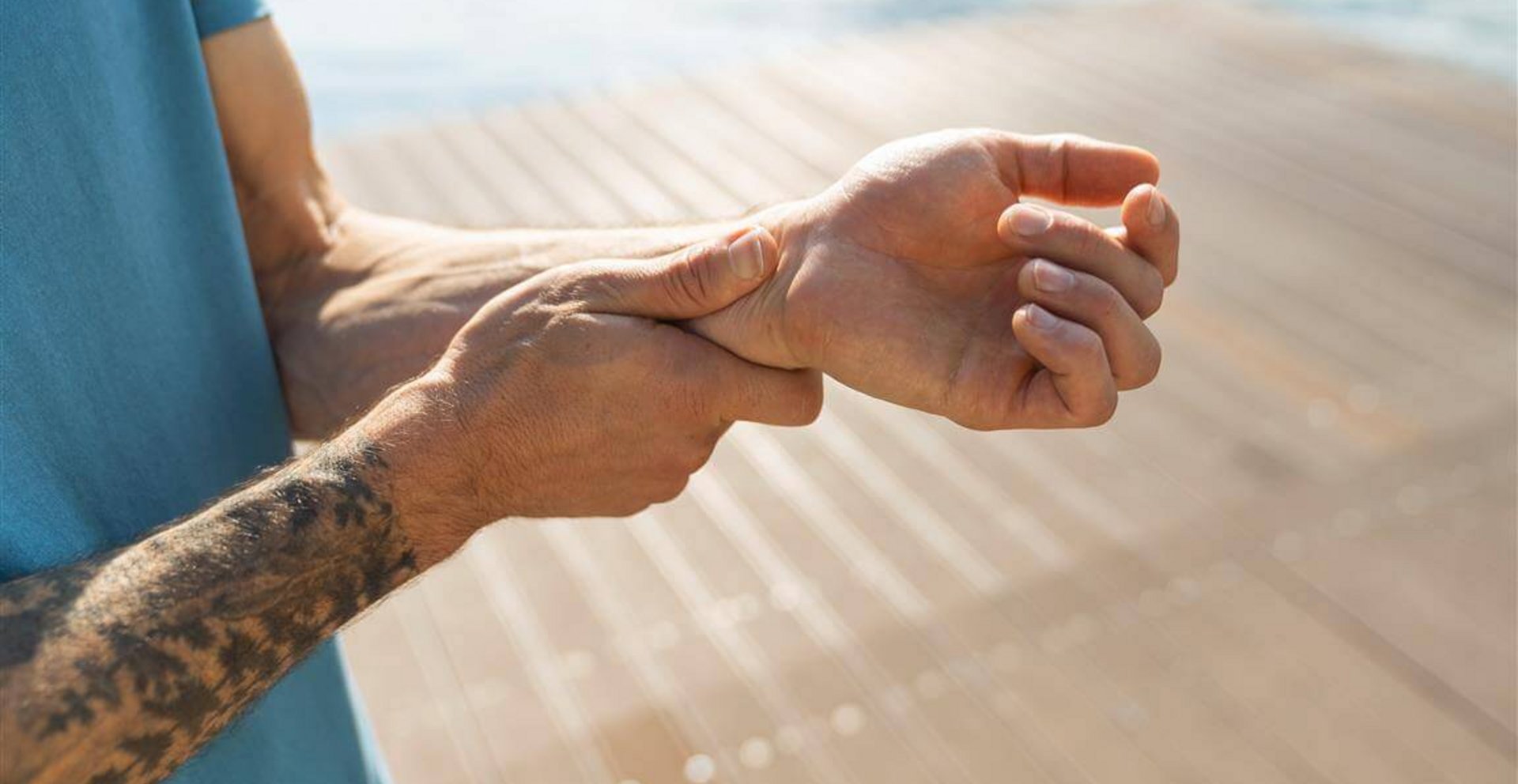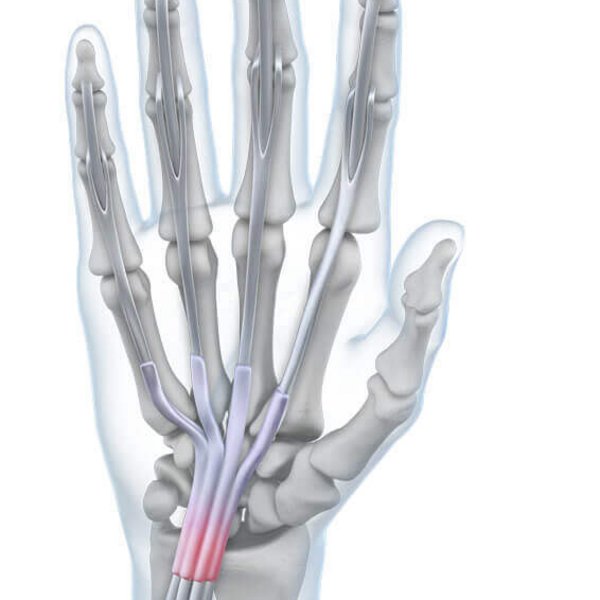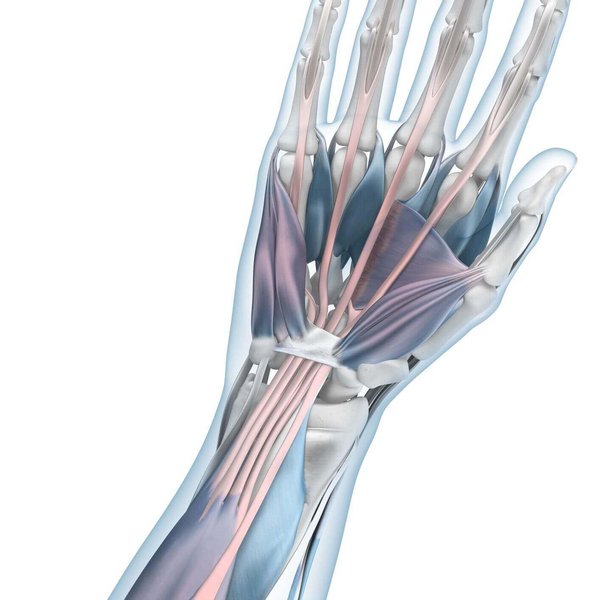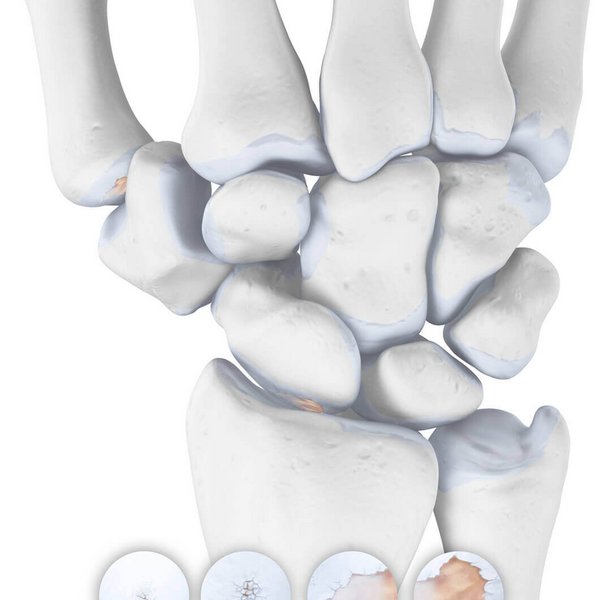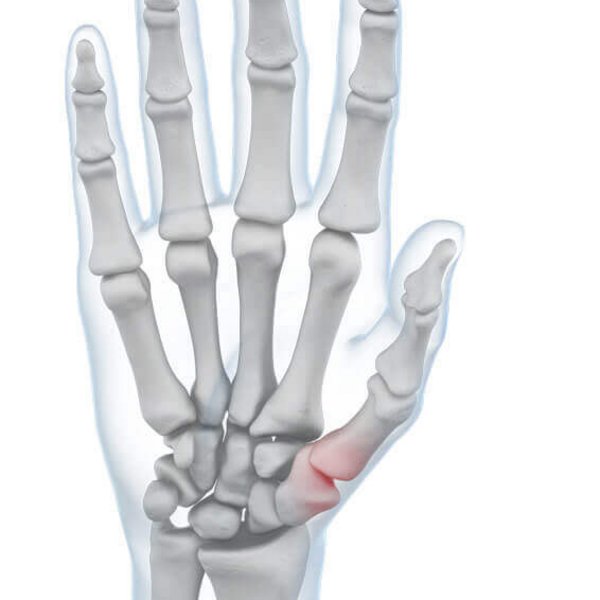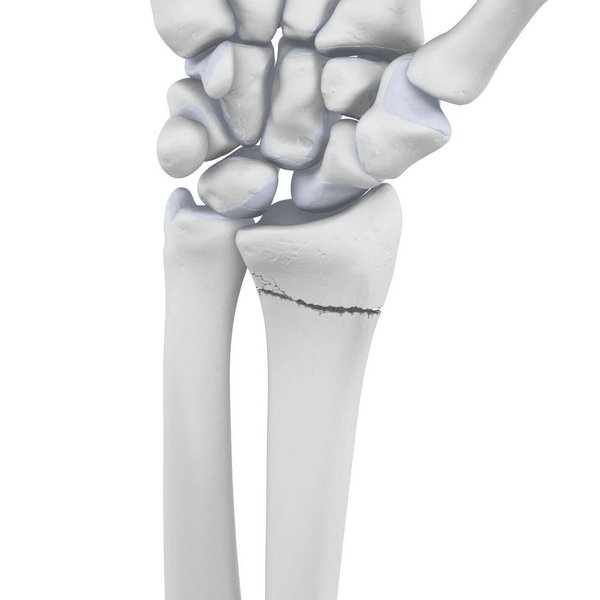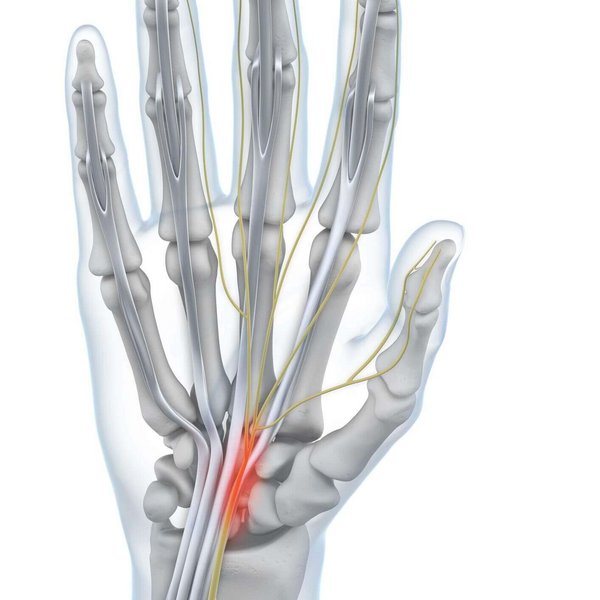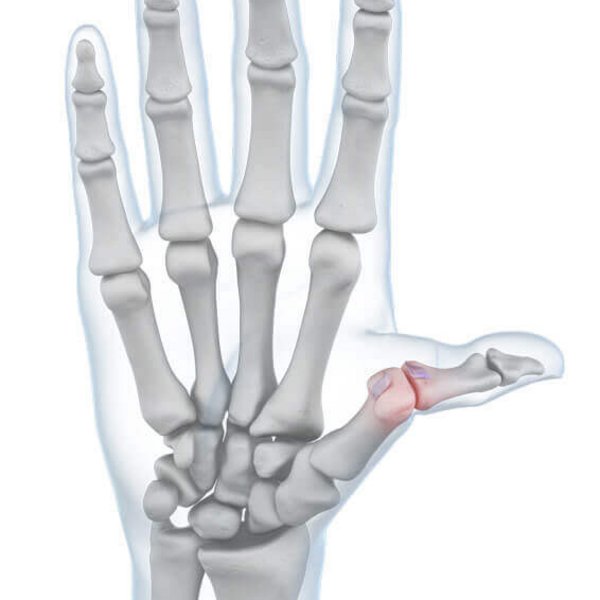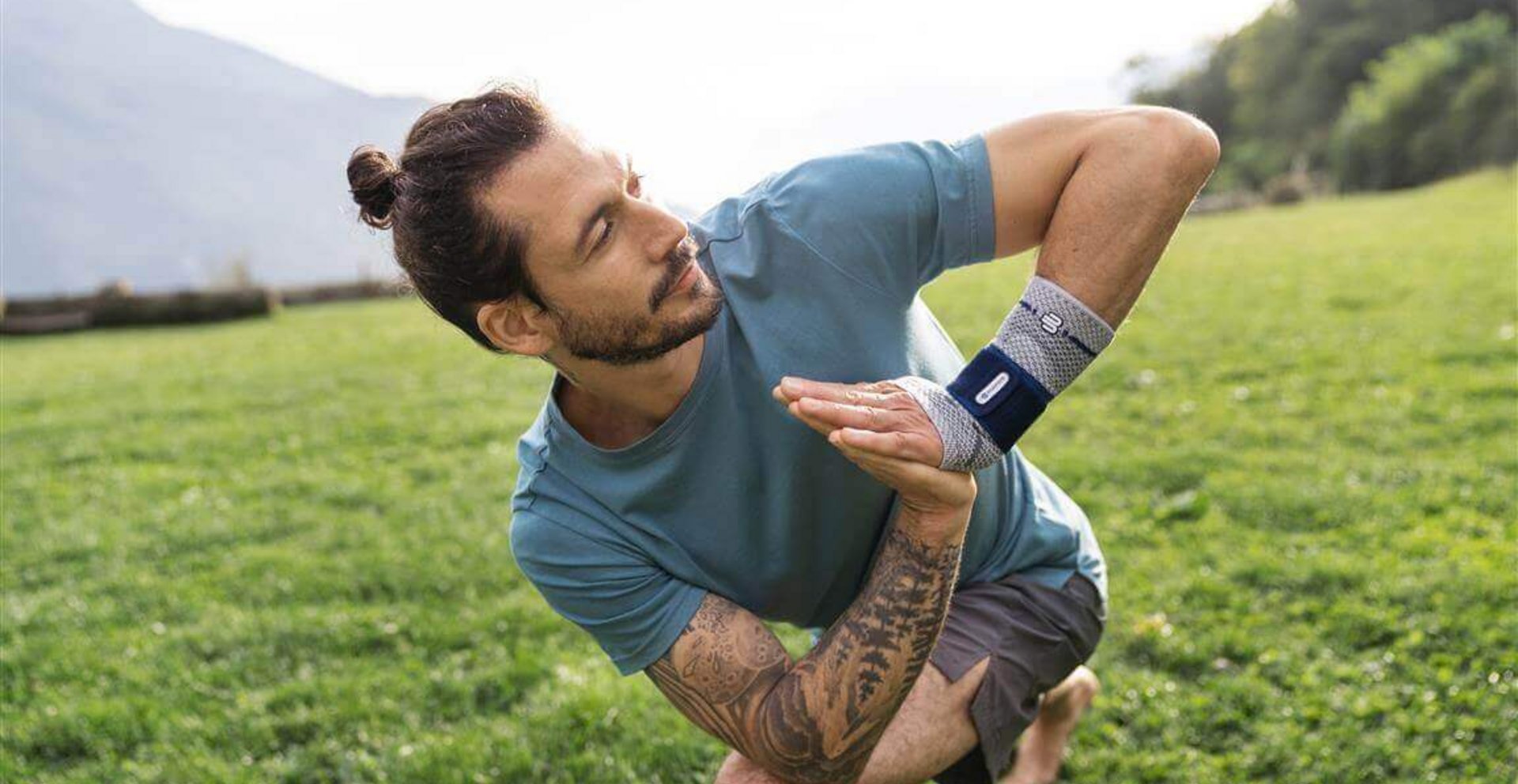As long as our hands and wrists work without causing us pain, we rarely think about them – but problems aren’t rare: work, leisure time, and exercise require different movements that sometimes subject the wrist to a lot of strain and can result in injuries as well as chronic conditions. The same is true for accidents, for example if you break a fall using your hands. All cases lead to pain in the wrist. That’s why it’s important to find the cause of your wrist pain so you can start targeted treatment.
The most common finger, hand, and wrist injuries and conditions at a glance:
What is the structure of the hand and wrist?
From a biomechanical aspect, our hands may be the greatest miracles in nature: the hand is made up of 27 individual bones and numerous joints. Interacting with the complex ligament, tendon, and muscle system, the hand can make delicate and powerful movements at the same time. But this is not enough: our hands aren’t made purely for gripping; they’re also one of our body’s most important sensory organs. All stimuli from touch are transmitted to the brain via an additional nerve network.

Our fingertips can even feel the tiniest elevations of just 0.006mm.
The wrist joint, which strictly speaking consists of three individual joints, is stabilized by taut capsular ligament structures. This limits its mobility, thus protecting it from injuries. On the back of the hand, the extensor tendons run through six tendon compartments that act as guides. Along the palm of the hand, all tendons run in line with the major nerves. The median nerve (nervus medianus) runs through what is known as the carpal tunnel under the transverse carpal ligament.
On the whole, the interaction of complex anatomical structures in a confined space makes the hand prone to injuries or wear that can significantly restrict our everyday activities.
What to do in cases of hand pain?
In cases of wrist pain caused by excessive strain, e.g. resulting from sporting activities, rest is the first recommendation. If the pain persists for several days or even worsens, a physician must be consulted. The same applies to finger and wrist pain after an accident.
In order to prevent permanent damage, the correct diagnosis and immediate treatment measures are essential. Depending on the indication and severity, treatment will differ: the spectrum ranges from conservative measures, e.g. physiotherapy, pain medication, or orthopedic aids, such as supports, to surgery followed by immobilization and gradual mobilization.
Ten tips for healthy hands and arms
In order to keep your hands and arms healthy and therefore preserve their functionality, you should follow these tips during everyday activities. They can help prevent pain and halt joint wear:
- Regularly perform strengthening exercises for your wrists and forearms to train the muscles that stabilize the joints.
- Avoid subjecting your wrists and elbows to excessive as well as ongoing strain and incorrect movements, for example when gardening or exercising.
- Use ergonomically shaped tools to relieve the wrist when working.
- Use a special gel pad to relieve the wrist during PC work.
- Make sure your desk is at the correct height to prevent tension in the arms, shoulders, and neck.
- Use ergonomic handlebars when cycling to protect your wrists.
- Protect your wrist and elbow joints with pads during sports such as skating or skiing.
- Wear gloves or arm warmers in winter to prevent exposing your wrists to the cold.
- Always evenly distribute heavy loads across both arms, for example when carrying groceries.
- Avoid excessively stretching the crook of the arm to prevent damaging the elbow.
Supports and orthoses for the wrist
In addition to following the ten tips mentioned above and doing regular therapeutic exercises, our supports and orthoses can help ease pain. They provide the wrist and fingers with stabilization. This is how they support the healing process and encourage you to be active.
Medical retailers provide quick help
You can get our ManuTrain support that helps you to actively combat pain and to promote the recovery of the injured wrist from a medical supply retailer near you, even without a prescription from your physician.
Get in-store advice on our products now.


